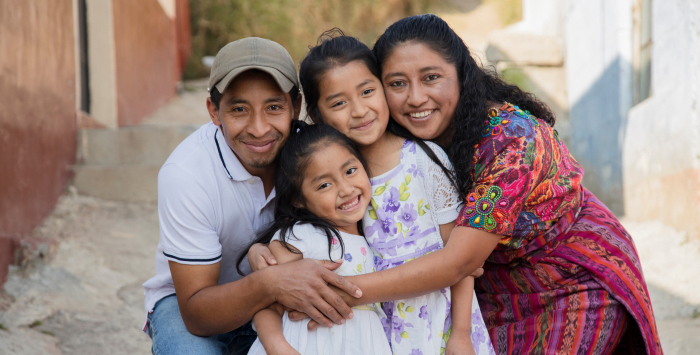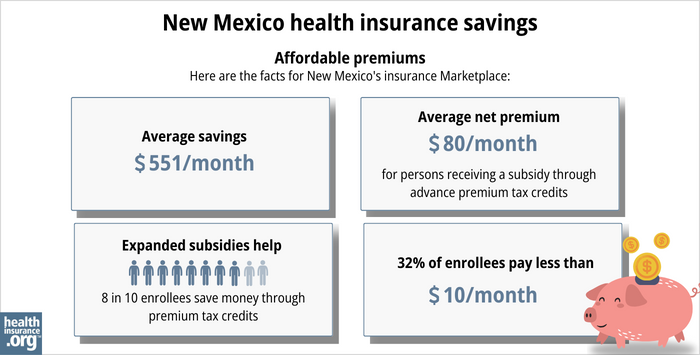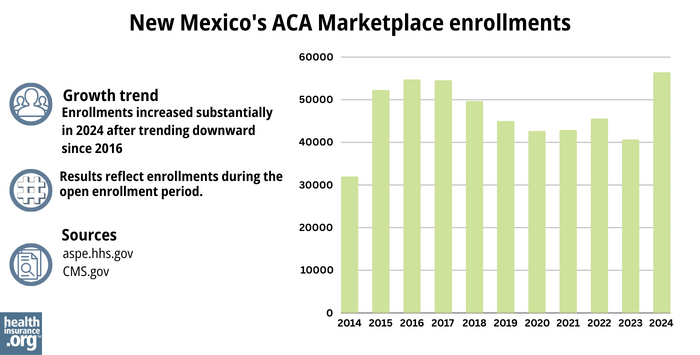

This guide to health insurance in New Mexico is designed to help you understand the coverage options and potential financial assistance available to you and your family.
Starting in the fall of 2021, New Mexico began using its own state-run health insurance exchange – beWellnm (also referred to as NMHIX, or New Mexico Health Insurance Exchange) . Before that, the state used the federally run HealthCare.gov Marketplace platform.
New Mexico residents can use beWellnm to shop for individual and family health plans offered by five private health insurance carriers, including one newcomer for 2024. 1 New Mexico’s Health Insurance Marketplace plans are used by people who aren’t eligible for Medicare, Medicaid, or an affordable employer-sponsored health plan.
New Mexico is among the states where additional state-funded subsidies are available through the Marketplace, in addition to federal subsidies. New Mexico’s state-funded subsidies were expanded for 2024, 2 and are expanding again for 2025 3 (more details below).
Five insurers offer plans through beWellnm in 2024, but one is exiting the market at the end of the year. The other four will continue to offer coverage in 2025 (details below).

Hoping to improve your smile? Dental insurance may be a smart addition to your health coverage. Our guide explores dental coverage options in New Mexico.


Learn about New Mexico's Medicaid expansion, the state’s Medicaid enrollment and Medicaid eligibility.


Use our guide to learn about Medicare, Medicare Advantage, and Medigap coverage available in New Mexico as well as the state’s Medicare supplement (Medigap) regulations.


Short-term health plans provide temporary health insurance for consumers who may find themselves without comprehensive coverage. Learn more about short-term plan availability in New Mexico.

To be eligible to enroll in private health coverage through beWellnm, you must: 4
So most New Mexico residents can enroll in a health plan through the exchange. 6 But a more pressing question for most people is eligibility for financial assistance in the form of state and federal subsidies through beWellnm.
To qualify for income-based federal Advance Premium Tax Credits (APTC), New Mexico Premium Assistance , federal cost-sharing reductions (CSR), or New Mexico’s State Out-of-Pocket Assistance (SOPA) , you must:
In addition to those basic parameters, beWellnm subsidy eligibility will depend on your household’s income.
In New Mexico, the open enrollment period begins November 1 and continues through January 15. 11
(Note that for off-exchange plans — obtained outside of beWellnm — the enrollment period ends December 15 in New Mexico, and does not continue into January the way it does for on-exchange plans. 12 This is fairly unique, as the open enrollment period in most states is the same for on-exchange and off-exchange plans.)
For 2024 coverage, beWellnm enrollments had to be completed by December 31, 2023 to have coverage effective January 1. Enrollments completed between January 1 and January 15 had coverage effective February 1. 13 (These dates are potentially subject to change in future years, so be sure you’re looking at the current year’s enrollment rules.)
After the open enrollment period ends, you may still be able to enroll or make a plan change if you experience a qualifying life event, such as giving birth or losing other health coverage.
New Mexico also has an Easy Enrollment Program that allows people to start the health insurance enrollment process via state tax returns. 14
And some people can enroll year-round even without a specific qualifying life event . This includes the low-income special enrollment period, which is available to applicants with household income up to 200% of the federal poverty level in New Mexico. 15 (The household income cutoff for this SEP is 150% in most states.)
Enrollment in New Mexico Centennial Care (Medicaid) is available year-round.
To enroll in an ACA Marketplace/exchange plan in New Mexico, you can:
When you enroll in coverage through beWellnm, you may find that you’re eligible for financial assistance. And the assistance may be more robust than it is in many other states, as both federal and state subsidy programs are available in New Mexico. The state subsidies are once again being expanded for 2025 (details below).
As a result of the Affordable Care Act (ACA), federal premium subsidies (advance premium tax credits, or APTC) are available depending on your income. If you’re eligible for APTC, it will reduce the amount you pay for your health coverage each month, as long as you enroll in a metal-level plan through beWellnm.
Eighty-four percent of beWellnm enrollees were receiving APTC as of early 2024. These subsidies averaged $551 /month, reducing the average enrollee’s premium to $139/month. 16
Applicants with household income up to 250% of the federal poverty level are also eligible for federal cost-sharing reductions (CSR), which will reduce the deductible and other out-of-pocket expenses for Silver-level plans. Twenty-seven percent of beWellnm enrollees were receiving CSR benefits as of 2024. 17
And New Mexico is among the states where additional state-funded subsidies are available. As of 2023, New Mexico began offering state-funded premium subsidies (for applicants with income up to 400% of the federal poverty level, or FPL) and cost-sharing assistance (for applicants with income up to 300% of FPL), in addition to the federal premium subsidies and cost-sharing reductions. 18
New Mexico’s cost-sharing reductions (state out-of-pocket assistance, or SOPA) were expanded for 2024, ensuring that people with household income up to 300% of FPL could get plans with 90% actuarial value (ie, platinum-level coverage). 19 And that’s being expanded again for 2025, so that applicants with household income up to 400% of FPL can get plans with 90% actuarial value. 20
Plans with reduced cost-sharing, including federal CSR and SOPA benefits, are known as “Turquoise plans” in New Mexico, to make it easier for consumers to identify them. The 90% actuarial value plans are called “Turquoise 3.”
Starting in 2023, New Mexico no longer allows health insurers in the individual/family market to add a tobacco surcharge to smokers’ premiums (the state joined several others that had already imposed similar rules).
Starting with the 2024 plan year, New Mexico has standardized plans available at the Silver, Gold, and Turquoise level. 21

Depending on your income and circumstances, you may be able to enroll in free or low-cost health coverage through Centennial Care (New Mexico Medicaid). Learn more about whether you might be eligible for Medicaid in New Mexico.
As was the case in all states, Medicaid disenrollments resumed in New Mexico in mid-2023, after being paused for three years during the pandemic. But New Mexico took some fairly unique steps to help people transition from Medicaid to the Marketplace: For those with income up to 400% of the poverty level, the state covered their first month of after-subsidy premiums for the Marketplace plan, and beWellnm also offered retroactive effective dates (the first of the month during which the person applied) for the new Marketplace plans when a person transitioned away from Centennial Care Medicaid. 23
For 2024, five insurers offer exchange plans in New Mexico, 24 including UnitedHealthcare, which was new for 2024. 1
For 2025, there will be four participating insurers, as Ambetter/Western Sky will no longer offer coverage after the end of 2024. 25 Enrollees with 2024 Ambetter/Western Sky plans will need to select new coverage during the open enrollment period that begins November 1.
Unlike most states, all exchange carriers in New Mexico offer plans statewide, so consumers in all areas of the state have access to the same plans. 26
For several years, New Mexico had one of the few remaining ACA-created CO-OPs, but it closed at the end of 2020, leaving just three CO-OPs still operational (as of 2024, those three CO-OPs offer coverage in five states).
For 2025, New Mexico’s Marketplace insurers have proposed the following average rate changes, applicable to full-price (pre-subsidy) premiums: 27 (Proposed rates are under review by state regulators and will be finalized before open enrollment begins in November 2024.)
While average rate changes apply to full-price premiums, most enrollees do not pay full price. Eighty-four percent of beWellnm enrollees were receiving federal premium subsidies in 2024. 29
And many beWellnm enrollees also receive additional state-funded premium subsidies.
For perspective, here’s an overview of how average full-price premiums have changed over the years in New Mexico’s individual/family market:
During the open enrollment period for 2024 coverage, 56,472 people selected private plans through beWellnm, 40 setting a new record high.

Source: 2014, 41 2015, 42 2016, 43 2017, 44 2018, 45 2019, 46 2020, 47 2021, 48 2022, 49 2023, 50 2024 51
beWellnm The state’s exchange for small businesses, individuals, and families.
Health Action New MexicoA consumer advocacy organization working to improve healthcare access and affordability in New Mexico.
New Mexico Human Services Department
Administers Centennial Care (Medicaid) and various other social services programs in the state.
New Mexico Office of the Superintendent of Insurance
Licenses and regulates health insurance companies in New Mexico, as well as brokers and agents; can provide assistance and information to consumers who have questions or complaints about regulated entities.
New Mexico State Health Insurance Assistance Program
A resource for New Mexico Medicare beneficiaries and their caregivers.
Louise Norris is an individual health insurance broker who has been writing about health insurance and health reform since 2006. She has written dozens of opinions and educational pieces about the Affordable Care Act for healthinsurance.org.